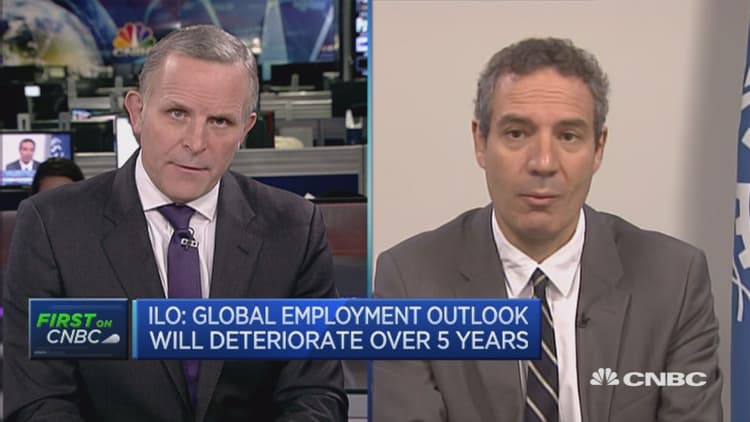
Quality jobs that provide social protection must play a central role to end poverty, said the International Labour Organization (ILO) on Wednesday, in its most recent World Employment and Social Outlook Trends 2016 report.
Although extreme poverty rates have been cut by more than half since 1990, too many people remain poor across the world, according to the ILO, and that's despite being employed.
Currently, almost one third of the extreme and moderate poor in emerging and developing countries actually have a job. However, these jobs often make the workers vulnerable - they are sometimes unpaid, concentrated in low-skilled occupations and absent of social protection, reported the ILO.
"It's extremely important to improve the job quality that people do… There are so many people working in precarious employment situations, also in developed countries," Raymond Torres, ILO Special Advisor on Social and Economic Issues, told CNBC on Thursday.
It is estimated that nearly 2 billion people live on less than $3.10 per day – that's over 36 percent of the emerging and developing world. And although the poverty rate overall has been reduced globally, notably in China and much of Latin America, it still remains high in Africa and parts of Asia, said the ILO.

"Right now, while 30 percent of the world is poor, they only hold 2 percent of the world's income," said Torres. "Only through deliberately improving the quality of employment for those who have jobs and creating new decent work will we provide a durable exit from precarious living conditions and improve livelihoods for the working poor and their families."
Interestingly - an increase in poverty has been recorded in developed countries, especially in Europe. The ILO estimated that, in 2012, over 300 million people in developed countries were living in poverty. That increase is linked to the high number of refugees that have come to Europe in the past few years.
Children and women are most affected by poverty. In emerging and developing countries, more than half of all children under the age of 15 live in extreme or moderate poverty. In developed countries, 36 percent of all children live below the relative poverty line.
The United Nations has listed its first sustainable development goal as 'End poverty in all its forms everywhere' by 2030. The ILO calculates however, that some US$ 600 billion a year – or nearly US$ 10 trillion in total over 15 years – is needed to eradicate extreme and moderate poverty globally by that date.
"The situation is worse and it's very difficult to see how we can reach the target to eliminate povety in 15 years time, something has to be done, and we know what to do," Torres told CNBC.
"The issue is political willingness - policy makers need to focus on these objectives of ending poverty and first of all they have to put the means to it."

